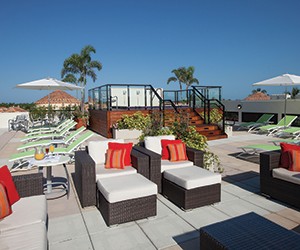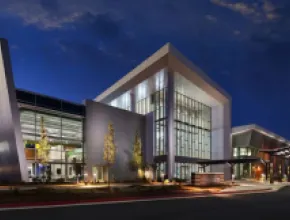With subtropical wetlands in the south, forests and rivers in the north and mile after mile of beaches, bays and offshore islands, Florida is a natural eco destination, and visitors flock from all over the world to hike its verdant trails, paddle its pristine waterways and explore its immense parks and preserves.
Yet within an already green state is an even greener corner: Southwest Florida, stretching from Charlotte Harbor in the north down to the Ten Thousand Islands that trail into Everglades National Park. Green hotels, green dining and even the LEED-certified JetBlue Park, which is the spring training facility for the Boston Red Sox, all demonstrate the area’s commitment to the environment, but one local group just raised the eco stakes by going statewide with its concept of “ethical ecotourism,” uniting conservation, community and sustainable travel.
Founded in Fort Myers, the Florida Society of Ethical Ecotourism (Florida SEE) maintains a rigorous, multitier certification program for ecotour operators and attractions that weeds out what its director calls “greenwash,” exaggerated or unregulated claims among certain ecotourism providers.
“People may consider themselves an ecotour, but what they’re really doing is nature-based tourism, which is wonderful, but we ask those folks to take that extra step,” says John Kiseda, volunteer executive director of Florida SEE and an environmental educator for Lee County Parks and Recreation. “Are you sustainable, are you giving back to your community? We’re looking at the whole range of what sustainability means. Ecotravelers are doing their homework. They’re not just accepting claims of being green, they want to see the fine print.”
Swampy Sojourns
One of Florida SEE’s ecotour operators concurs that 2013 travelers are more savvy about green issues.
“They’re more aware of their individual impacts as well as the impact that their travel choices have on the local and global environment,” says Capt. Charles Wright, president of Everglades Area Tours, which offers a range of guided adventures, including birding/wildlife photo tours, kayak excursions and swamp walks, through Everglades National Park and its surrounding protected areas.
Wright says he works with meeting planners to keep the naturalist guide-to-guest ratio low, and that experiences can be customized according to the group’s size and interests. A common practice is to offer programs simultaneously, keeping the numbers small and allowing for more communication and interaction among the group members and with the guide.
“The Everglades is one of America’s, and the world’s, treasures. It is a place to be savored and enjoyed by all,” he says of the largest wilderness area east of the Mississippi. “It’s a very unique part of our planet and is within an hour or two drive from most of the major population centers in South Florida. Those who experience it usually come away with a better appreciation of the natural world.”PageBreak
Paddle Power
Gliding through the natural world is the special pleasure of kayaking, and in Southwest Florida, paddling is the way to go when you want to explore back bays, creeks, bayous, rushing rivers, tangled mangrove forests and aquatic preserves teeming with wildlife—otters, gators and manatees are among the local residents—as well as birds of every feather, from the white ibis to the great blue heron.
Just don’t expect any close encounters with the local fauna when kayaking with Gaea Guides, another Florida SEE operator, whose tours feature Florida Master Naturalist guides certified by the University of Florida.
“We don’t deliberately attract wildlife and we don’t bother it. We’re strict about getting too close to birds or manatees,” says Connie Langmann, owner of Gaea Guides. “People are aware of how detrimental it is to disturb the wildlife, and they appreciate what we do.”
Though based in Fort Myers, Gaea paddles all the waterways of Southwest Florida, including the 190-mile Great Calusa Blueway. “We do every inch of that,” Langmann says. “And for groups, we can always get more kayaks and guides, so we’re flexible as to size.”
Shimmering Charlotte Harbor and its sparkling tributaries, including the Myakka River, are the focus of guided kayak ecotours offered by Grande Tours Kayak Center in Placida, featuring Florida Master Naturalist guides who lead two-hour adventures that include Charlotte Harbor Preserve State Park.
“We always say the wildlife chooses the encounter,” says Ashlee Doot, a guide with the company. “You’ll see anything from dolphin and manatees to conch, whelks and starfish.”
If gator sightings are a must, though, Grande Tours also offers excursions along the freshwater Myakka River. Tours generally last two hours, but, says Doot, “If we see a manatee near the end of the trip, we’ll stay out.”
Spin Cycle
Grande Tours is also the southern starting point of the Pioneer Bike Trail, a nine-mile trek (one way) through Florida scrub, woods and hammocks, with abundant wildlife and resident and migratory birds for company. Bicycle rentals are available on-site, and Grande also offers pick-up service for those who don’t want to make the full 18-mile roundtrip.
Within five miles of the city of Punta Gorda in Charlotte County, civilization disappears at the vast Babcock/Webb Wildlife Management Area, one of the last undeveloped expanses of wet pine flatwoods in Southwest Florida and a birding hot spot that is part of the Great Florida Birding and Wildlife Trail. Eastern cottontail rabbits, gray squirrels, raccoons, white-tailed deer and feral hogs may cross your path on a bicycle tour departing from Acme Bicycle Shop in Punta Gorda, which provides the bike, helmet, water and tour guide.
“We go at a nice, slow pace, slow enough to see the birds and turtles, and cover about 10 to 14 miles,” says Shawn Johnson, assistant manager. “It’s pretty flat, so you don’t struggle going up steep hills.”
Johnson says while guides do follow an established trail, the two-hour tour is flexible enough to include unscheduled stops.
“If you see something, they’ll stop to check it out,” she says. “On our tour, you slip back in time to see swamps, flatwoods and other areas that few have seen.”






